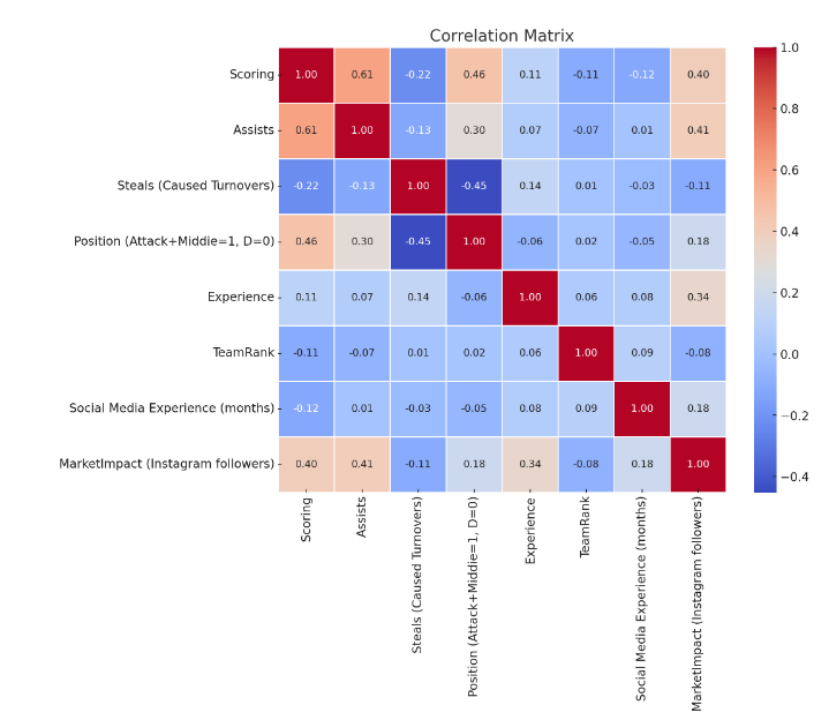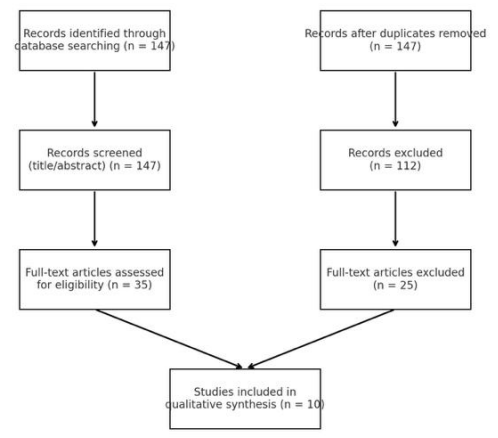

Volume 76
Published on September 2025Volume title: Proceedings of ICADSS 2025 Symposium: Art, Identity, and Society: Interdisciplinary Dialogues
In the context of global migration crises and deepening educational inequalities, this study examines how hip-hop dance initiatives in Berlin and Toronto serve as sites for marginalized migrant youth to reconstruct social identity through embodied practice. Grounded in Critical Hip-Hop Pedagogy (CHHP) and Social Identity Theory (SIT), the research investigates two core questions: how programs strategically redesign social categorization via curricula, and how participants transform individual/collective trauma into empowered group identity through artistic production. Using comparative case studies of “Urban Beats” (Berlin) and “Rhythm Rebels” (Toronto), the analysis reveals three interrelated mechanisms. First, strategic recategorization subverts institutional labels through choreographic counter-mapping. Second, trauma capitalization converts historical pain into cultural resilience: Toronto’s Stolen Rhythm encoded colonial land seizures via stomping sequences, correlating with a 35% reduction in post-performance cortisol levels, while Berlin’s Syrian participants shifted “war” discourse from 41% to 9% in rehearsals. Third, spatial counter-comparison suggests what might be characterized as a reclamation of urban power zones. The body represents a site of resistance, where choreographic improvisation, spatial subversion, and lexical self-determination collectively appear to complicate traditional interpretations of oppressive categorizations. Within this broader analytical framework, this study tends to suggest what reveals hip-hop's potential to transform "social wounds" into "cultural trophies," calling for what the evidence reveals reveal as policy evaluation frameworks that ostensibly prioritize identity justice over predominantly instrumental metrics.

 View pdf
View pdf


This paper explores the evolving meaning of “publicness” in contemporary public art amid increasing privatization, shifting curatorial practices, and the expanding influence of market-driven cultural policies. Once defined by their physical presence in civic spaces and accessibility to diverse audiences, many public artworks now undergo spatial, legal, and symbolic transformations. Some are removed from the public realm and absorbed into private collections, while others are reintroduced foundations, corporate displays, or philanthropic initiatives. These developments blur the boundary between public good and private interest, raising questions about visibility, participation, and cultural ownership. Through case studies of Banksy, Richard Serra, and Augusta Savage, this research examines how changes in ownership and institutional control reshape not only access to art, but also its collective meaning and socio-political resonance. Drawing on Tony Bennett’ s theory of the “Exhibitionary Complex” and Pierre Bourdieu’ s concept of cultural capital, the paper argues that the value of public art lies not in static placement or legal designation, but in its ability to engage memory, foster dialogue, and remain visible to the public. Ultimately, it calls for a collaborative approach between private and public actors to preserve the cultural and civic functions of public art in a time of systemic transformation.

 View pdf
View pdf


As the capital of the Early Shang civilization, Zhengzhou Shang City is crucial for studying Shang civilization and early Chinese urban development. Uruk, founded by the Sumerians, is recognized as the world’s first true city. Comparing Zhengzhou Shang City and Uruk in terms of geography, urban planning, and artifacts reveals that differing environments led to distinct agricultural and cultural practices. Zhengzhou Shang City, influenced by kingship, featured high walls and large palace complexes, reflecting royal authority and ritual systems, while Uruk’s temple-centered layout highlights religion’ s central role. Excavated artifacts from both sites further illustrate differences in materials, production, and usage. Although both cities emerged from river civilizations on alluvial plains, Uruk developed around religious and natural needs with mixed functions, whereas Zhengzhou Shang City was shaped by political power and cultural integration, resulting in a highly planned metropolis. These contrasts reveal divergent paths of religious and royal dominance in early urbanization and highlight the diversity of early city development.

 View pdf
View pdf


This study aims to explore the changes in gender roles and power dynamics in modern society, particularly by analyzing the case of the film The Proposal to investigate gender inequality in heterosexual relationships. Despite increased focus on gender equality, gender roles remain unevenly distributed in society, especially in the family and workplace. In particular, this study analyzes the transformation of gender roles and power structures in the film,thus exploring the changes in women’s positions and their sociological significance. Through literature review and case studies, it interprets the gender dynamics in the film through sociological theory, and using statistical data to define traditional gender roles. The results show that by reversing traditional gender roles, the film highlights the persistence of gender inequality in modern society and reflects the innovative transformation of power structures. Thus, it may provide new insights into understanding the evolution of gender roles and emphasizes the challenges and opportunities gender equality faces in practice.

 View pdf
View pdf



This study investigates how athletic performance influences the number of Instagram followers, revealing the role of social media network externalities in the Premier Lacrosse League (PLL). Using comprehensive player performance data and social media metrics from the 2024 season, the study employs a grouped regression model to analyze the effects of scoring, assists, and steals on follower count, while examining the heterogeneity between offensive/midfield and defensive players. Results show that scoring and assists significantly and positively affect follower counts for offensive players, whereas the athletic performance of defensive players has limited impact on their social media influence. Additionally, both professional experience and social media experience exhibit strong positive effects across player groups. The findings highlight the interaction between athletic performance and digital presence in niche sports, offering empirical insights into personal brand building and strategic communication. This study underscores the importance of offensive performance in enhancing player visibility and suggests that media strategies should be tailored to player roles. It also recommends future research to incorporate time-series data in order to better capture the dynamics of social media growth over time and further clarify the mechanisms behind network externality effects in professional sports.

 View pdf
View pdf



All About Lily Chou-Chou, shown in 2001 and directed by Japanese filmmaker Shunji Iwai, is widely recognized for its fragmented narrative, poetic visual style, and unconventional cinematography, which have made it a subject of extensive analysis in film and cultural studies. While existing research has primarily focused on themes of adolescent alienation and the early 2000s internet culture, few have systematically examined the film’s aesthetic construction through cinematography, lighting, and color. In particular, the motif of “Ether,” often viewed symbolically, remains underexplored in visual and semiotic terms. This study addresses that gap by analyzing the film’s cinematographic techniques and the philosophical and symbolic dimensions of “Ether,” a concept reinterpreted as a utopian projection of adolescent spirituality. Through a literature review and aesthetic analysis, the research reveals how the film captures the existential tensions of youth, the conflict between good and evil, and the cultural shifts brought by the rise of the internet age, thereby contributing to a deeper understanding of Iwai’s cinematic aesthetics.

 View pdf
View pdf



Adolescent depression has become a growing global public health problem. Although existing research suggests that urban green spaces have a positive effect on mental health, most studies have been conducted with adults or older adults. As a vulnerable group at a critical developmental stage, adolescents may exhibit different psychological responses to green space exposure in their residential environments, necessitating in-depth exploration. Focusing on the relationship between green space exposure and depressive symptoms among adolescents aged 13-19 years, this review synthesizes cohort studies, cross-sectional surveys, and systematic reviews published between January 2019 and July 2025, analyzing the effects of variables including green space distribution, accessibility, and frequency of use. Findings suggest that greater access to green spaces in adolescents is generally associated with reduced depressive symptoms, an effect that may be realized through stress moderation and enhanced social support. However, existing studies differ in design, measurement tools, and control of confounders, limiting the generalizability of findings. Notably, the dose-response relationship between green space exposure and depressive symptoms remains largely unexplored. Future studies should standardize green space exposure assessments, explore dose-response relationships, and focus on cultural and socioeconomic factors to guide mental health interventions and urban greening planning.

 View pdf
View pdf



In the context of China’s rapid urbanization, top-down approaches to cultural heritage protection often fails to maintain authenticity and community vitality. This study examines the community-driven model as an alternative paradigm, focusing on South China cases (Mei Zilin, Liu Gengtang, etc.). Through qualitative methods, this paper analyzes how community participation shifts from symbolic consultation to substantive co-governance; the collaborative mechanism of multiple subjects in the inheritance of cultural memory; the reproduction path of activating space in the material, functional and symbolic dimensions; and core structural challenges. The results prove that the co-creation mechanism combining institutional empowerment with local knowledge translation can stimulate the endogenous momentum of the community and achieve the sustainable rejuvenation of cultural heritage. However, it is necessary to resolve the tension between the protection of historical authenticity and the adaptability to contemporary development, and overcome technology gaps and cultural commercialization risks. This model balances heritage protection and community development, but its successful implementation depends on a deep understanding of local social structures and cultural contexts and the design of adaptive mechanisms.

 View pdf
View pdf


:This comparative study explores the psychological effects of classical ballet and contemporary dance on female dancers, drawing on embodiment theory to explore how movement, aesthetic ideology, and training environments shape female dancers’ body image, self-esteem, and overall mental well-being. While dance is widely recognized for its psychological benefits, existing literature often treats it as a monolithic practice, overlooking the genre-specific pressures and affordances that influence dancers’ well-being. Through an in-depth theoretical and empirical analysis, this study examines the differential impact of classical ballet and contemporary dance on dancers’ psychological well-being. Ballet’s codified aesthetic ideals, hierarchical pedagogical structures, and culture of perfectionism have been linked to increased risk of body dissatisfaction, disordered eating, conditional self-worth, and psychological distress, particularly in relation to injury and identity development. In contrast, contemporary dance, characterized by its emphasis on individuality, somatic awareness, and expressive authenticity, appears to support greater psychological flexibility, body acceptance, and emotional resilience. Injuries are common in both styles but are processed differently: ballet injuries often disrupt identity and lead to emotional withdrawal, while contemporary dancers approach recovery as embodied adaptation. Contemporary dance supports more adaptive coping strategies through its emphasis on improvisation, collaboration, and personal agency, while ballet’s rigid structure, perfectionism, and limited emotional autonomy often result in less flexible coping mechanisms. This study not only addresses a significant gap in the literature but also offers practical insights for educators, psychologists, and dance institutions aiming to understand and support female dancers’ mental well-being.

 View pdf
View pdf


Amid the relentless rise of algorithmic platforms and on-demand cultures, traditional media confront simultaneous erosion of their audiences, advertisers, and century-old business architectures. This paper interrogates that crisis through a systematic review of current scholarship and market evidence, tracing how user migration to personalised social video (e.g., TikTok) and subscription streaming has accelerated after COVID-19, and how targeted, data-rich digital advertising has drained legacy revenue pools. Against this backdrop, the study distils best-practice responses from incumbent giants—Disney’s vertically integrated streaming stack built on Fox assets and original IP, Warner Bros.’ hybrid HBO Max strategy balancing exclusivity and syndication, and transnational experiments in cultural adaptation across China’s mobile-first entertainment economy. Four strategic imperatives emerge: (1) re-platforming content via proprietary or partnered streaming channels; (2) co-financing and co-producing originals with global platforms to share risk and reach; (3) deploying AI recommendation engines, VR/AR immersion, and voice interfaces to deepen engagement; and (4) granular localisation of narratives, formats, and pricing to unlock emerging-market middle-class demand. These moves, however, must negotiate entrenched cultural preferences and ferocious local competition. The paper concludes that survival is contingent on treating digital transformation not as an episodic upgrade but as an open-ended process of technological, organisational, and cultural reinvention.

 View pdf
View pdf




